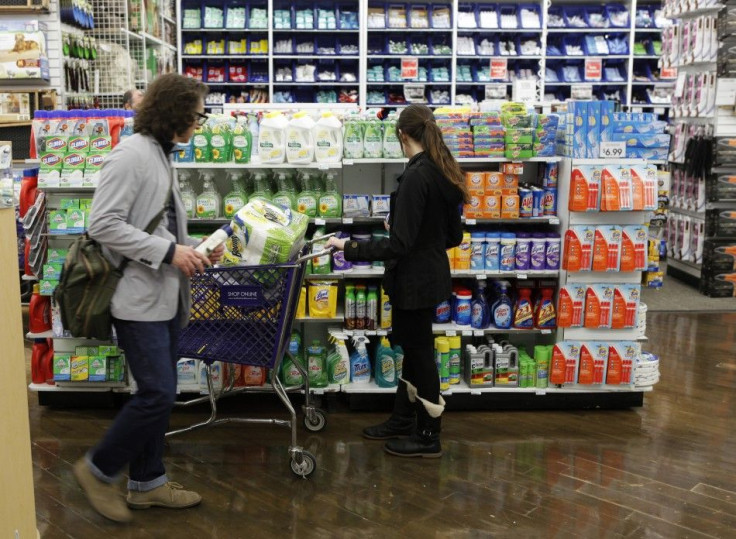Second-Quarter Growth Slows, Outlook Less Dismal

The struggling U.S. economy expanded even more slowly than previously thought in the second quarter of 2011, but a breakdown of the growth suggested a new recession could be avoided.
Gross domestic product rose at an annual rate of 1 percent, the Commerce Department said on Friday, as restocking by businesses and growth in exports proved less rapid than initially estimated.
While confidence indicators have plummeted of late, the most timely hard economic numbers certainly do not suggest that the economy has fallen back into a recession, said Harm Bandholz, chief U.S. economist of UniCredit Research in New York.
Instead, we still continue to expect that growth in the second half of the year will accelerate to about 2 percent.
The rate of growth between April and June was cut from the government's first reading of 1.3 percent and followed a measly pace of just 0.4 percent in the first three months of the year.
This means the economy grew only 0.7 percent in the first half of 2011. Nonetheless, and despite a sharp fall in consumer confidence this month, economists do not believe the economy will fall back into recession.
The Thomson Reuters/University of Michigan consumer sentiment index fell to 55.7 this month from 63.7 in July. It was slightly better than August's preliminary reading of 54.9, which had been the lowest level since May 1980.
The weak growth pace has been blamed on high gasoline prices, bad weather and supply-chain disruptions from the March earthquake in Japan, all of which are considered to be temporary drags on the economy.
Federal Reserve Chairman Ben Bernanke told a gathering of central bankers from around the globe in the Rocky Mountains of Wyoming that the economy's recovery from the worst downturn since the 1930s has been much less robust than we had hoped.
He stopped short of detailing further monetary policy action to bolster the ailing economy, but said the U.S. central bank would consider what more it could do to fight high unemployment.
U.S. stocks initially fell on the data and disappointment that Bernanke had not explicitly signaled more policy easing, but they subsequently recovered most of the losses. In afternoon trading, the three major U.S. stock indexes were up sharply - with gains ranging from 1.3 percent to 2.3 percent. U.S. Treasuries' prices rallied. The dollar was steady.
Details of the GDP report were generally encouraging, with consumer spending slightly firmer and businesses accumulating fewer goods than previously thought. Business spending was also more robust than initially believed.
This should improve the economy's prospects for the third quarter, although a strong pick-up in growth remains remote.
STIMULUS NEEDED
Economists said the economy was in desperate need of both fiscal and monetary stimulus, but none expected much help from both fronts.
The Fed has injected about $2.3 trillion into the economy through purchases of government and agency debt since late 2008 and has slashed interest rates to near zero, leaving it with limited ammunition to bolster the economy.
At the same time, there is no appetite in Washington to increase government spending because of a huge budget deficit.
The economy is on its own, said Christopher Probyn, chief economist at State Street Global Advisors in Boston. We are not going to get a marked acceleration in growth.
Business inventories increased $40.6 billion instead of $49.6 billion, cutting 0.23 percentage point from GDP growth during the quarter. The slower restocking was largely blamed on the disruptions to motor vehicle production because of a shortage of parts from Japan.
Motor vehicle production rebounded strongly in July. The slow build-up of inventories also means goods are not piling up on shelves, which should support growth in the third quarter. Excluding inventories, the economy grew at a 1.2 percent rate.
Trade barely contributed to output in the second quarter despite a weak dollar.
The drag from business inventories was offset by growth in consumer spending, which was revised up to a 0.4 percent rate from 0.1 percent.
While sentiment has deteriorated sharply, it remains unclear whether this will translate to consumers and businesses hunkering down, given that data such as industrial production, retail sales and employment remain relatively firm.
What consumers say and how they behave do not always align. Consumer sentiment will likely be supported as gasoline prices continue to decline, said Troy Davig, an economist at Barclays Capital in New York.
Business spending in the second quarter was stronger than previously estimated -- revised upward to a 9.9 percent rate of increase from 6.3 percent. After-tax corporate profits increased 4.1 percent in the second quarter after edging up just 0.1 percent in the first three months of the year.
© Copyright Thomson Reuters 2024. All rights reserved.





















